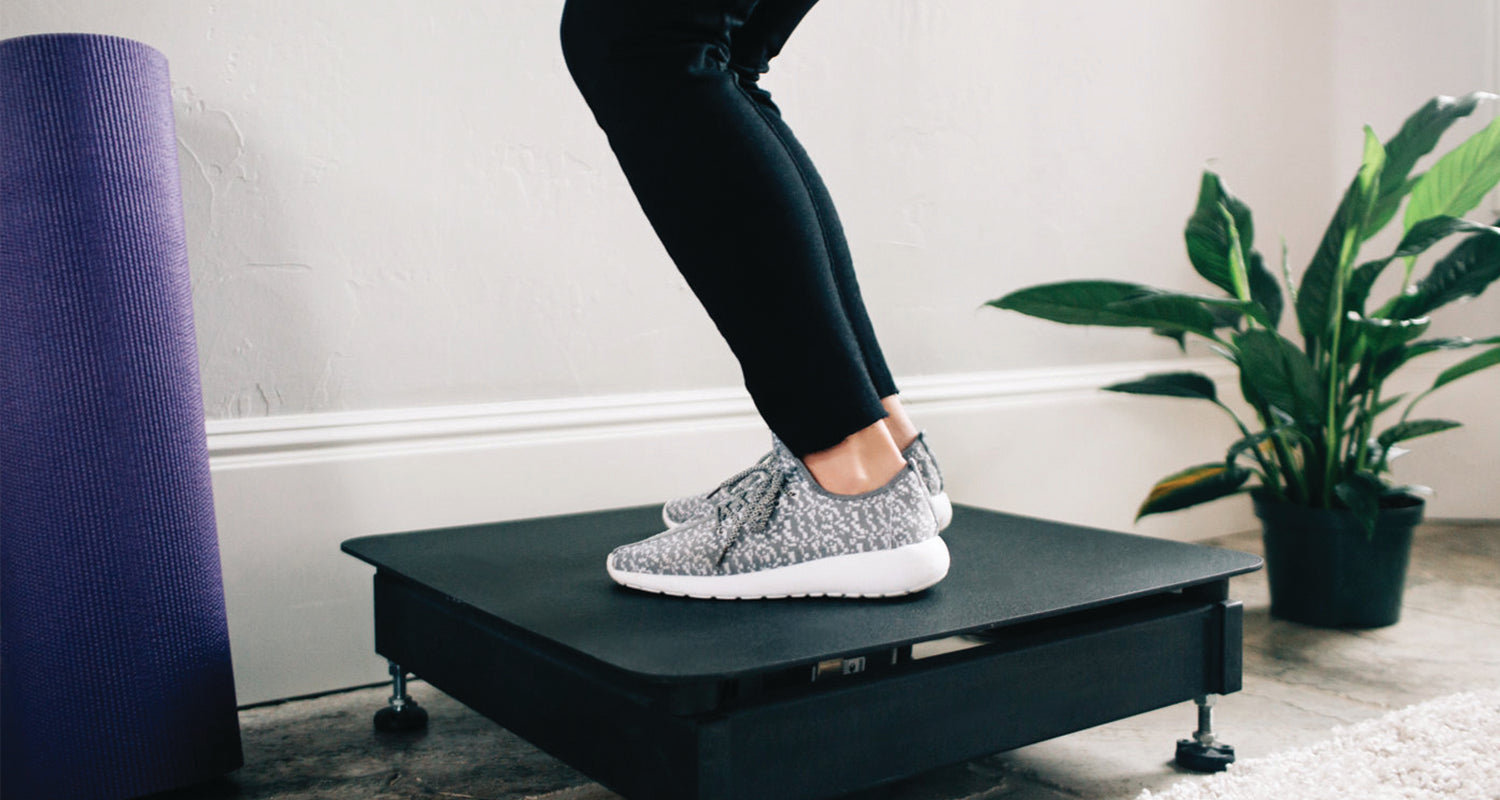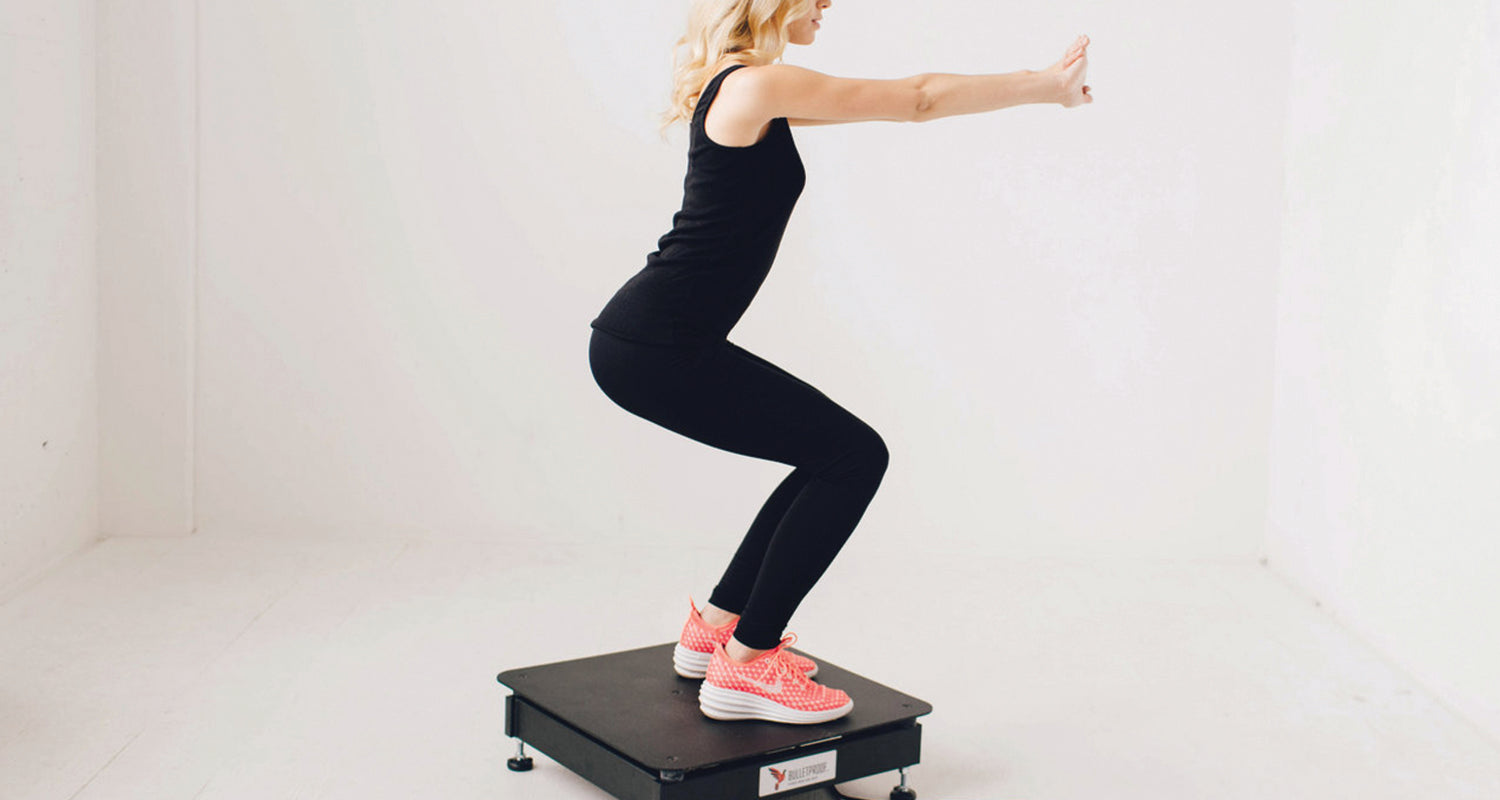What is Whole Body Vibration Training?
Biohackers are known for finding and testing new tools and protocols that help increase physical and mental performance in the least amount of time. That’s where a hack like whole body vibration training (WBVT) comes in. This little vibrating plate is one of the best ways to hack your strength and recovery, stimulate microcirculation, and even improve mental acuity.
What is a whole body vibration training plate?
A whole body vibration training plate, commonly referred to as a “vibration machine”, is a platform that vibrates at a specific frequency to activate your circulatory, lymphatic, and nervous systems simultaneously.
Different WBVT machines have different frequencies, but the most effective frequency for the most people is a constant 30 Hz.[1]
Many WBVT machines have adjustable speeds, but this usually compromises the quality of the engineering. The best way to make a WBV unit affordable AND high quality is to use a constant rate motor.
How does whole body vibration training work?
As you sit or stand (always with knees bent!) on the vibration machine vibrating platform, your muscles will contract and relax dozens of time each second, which is why doing squats on a vibrating plate requires so much more energy than doing them on the ground.
Vibration can help oxygen and nutrients get to your muscles and other tissues more efficiently, which can aid in flexibility, blood flow, and muscle recovery after exercise.
How to use whole body vibration training
You can use whole body vibration training to get the lymphatic and circulatory benefits associated with movement, or you can perform some simple exercises on the vibe plate to strengthen your muscles.
Here are some simple steps to get you started:
Start with 30-second to 1-minute sessions two or three times a week, and (if desired) you can slowly work your way up to 15-minute sessions. Don’t exceed 15 minutes on a vibration plate.
Keep your knees bent at about a 30-degree angle as you stand on the vibrating plate. Engage in this position for as long as possible, or try holding different positions. Other popular poses include deeper squats or placing your hands on the vibe plate (feet on the floor) in a plank position. Hold this for as long as you can without exceeding 15 minutes!
Benefits of whole body vibration therapy
-
Strengthen your muscles and bones.[2][3]
-
Increase lymphatic circulation.[4]
-
Increase flexibility.[5]
-
Enhance knee neuromuscular control
-
Improvement in blood circulation.[6]
-
Improve balance.[7]
Getting the Most Out of Your Workouts
Getting a dynamic workout doesn’t have to be difficult or time-consuming. Specially designed
vibrations work your muscle fibers, whether you’re standing still with knees bent or switching poses.
This level of muscle engagement translates to a high-intensity workout. Use the Bulletproof
Vibe WBVT Plate with weights about once a week for 15 minutes.
Balancing cortisol & hacking stress
A famous study done in 1995 by Frank Perna and Sharon McDowell found that cortisol (a hormone
that pumps out when you’re stressed) can remain elevated for up to 20 hours after conventional training.
Overproduction of cortisol can negatively affect the body’s recovery process and sap your energy, making it
difficult to perform in other areas of your life – and WBV training may actually help keep your cortisol levels
balanced. In fact, one study involving men showed that after 10 repetitions of WBV training, participants
experienced a 32% decrease in cortisol.
Bottom line: From Olympic athletes reaching their peak to the biohacker seeking better blood flow and bone density, WBV training can be an amazing hack.
Get the details on the Bulletproof Vibe WBVT Plate
Before using a WBV Plate or other vibration machine, contact your physician if you are
pregnant, have foot, knee or hip implants, lumbar disc problems, or acute inflammations or infections.
References

